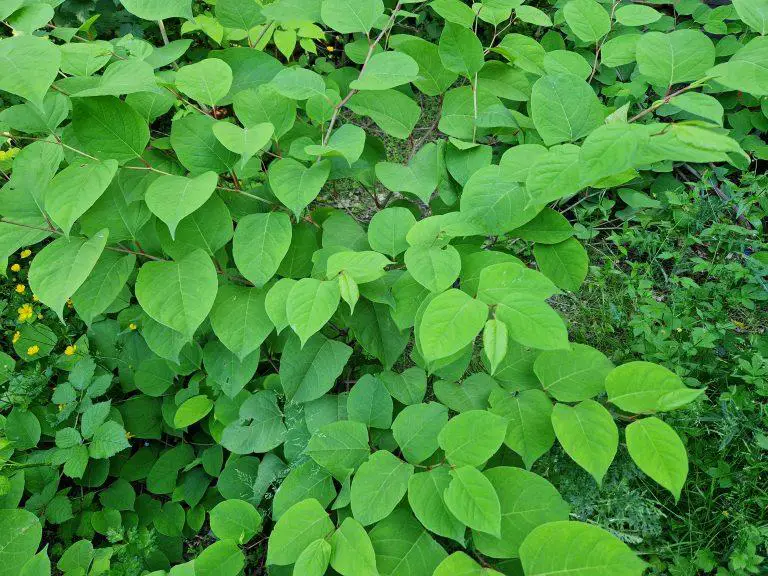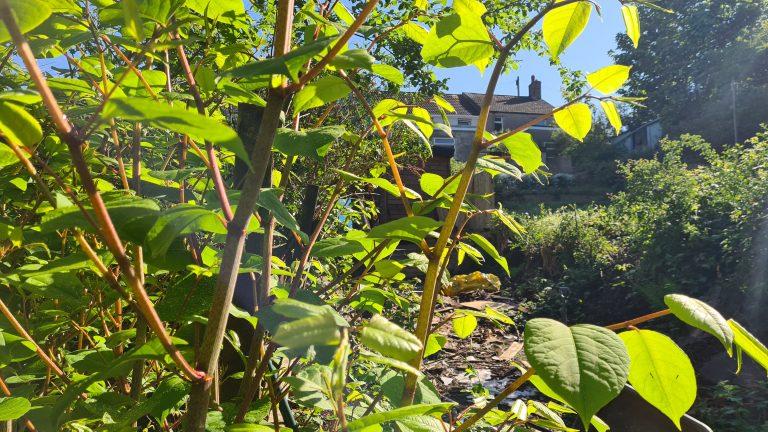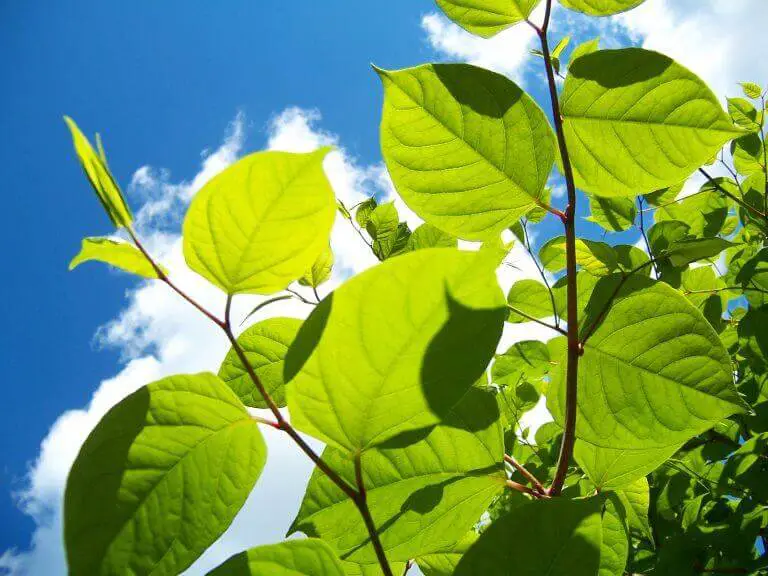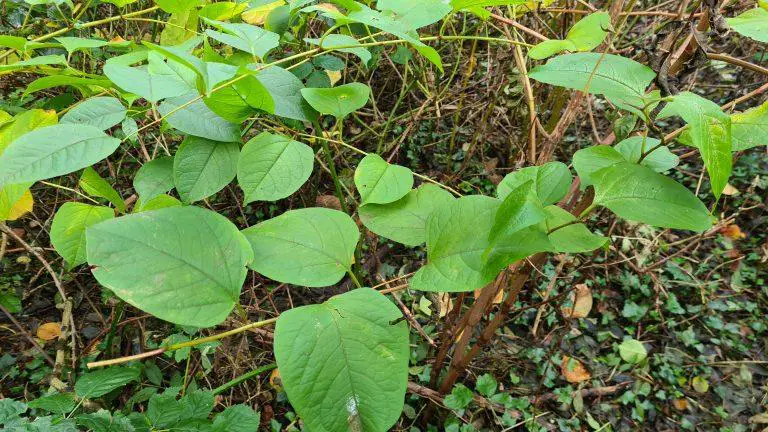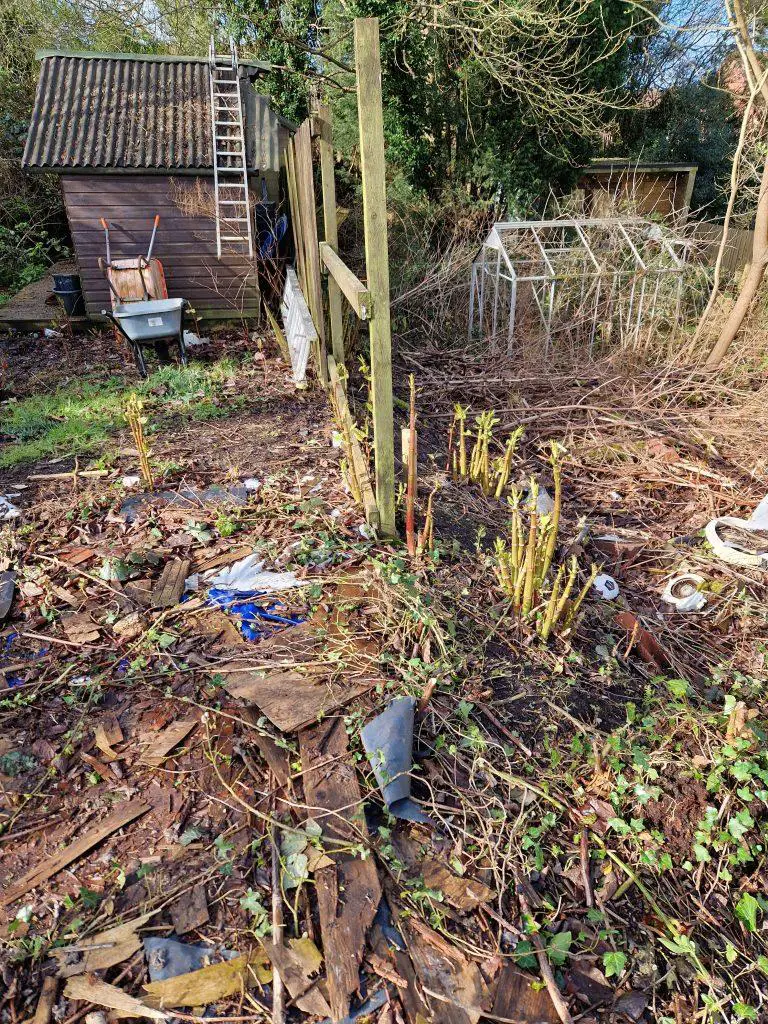If you are interested in the biodiversity of an area, you may have heard of Japanese knotweed. This invasive plant species, originally from Asia, has become a major problem in many parts of the world. It can grow up to three metres tall, has large, heart-shaped leaves, and produces clusters of small, white flowers in late summer.
Japanese knotweed can have a significant impact on the biodiversity of an area. It can outcompete native plants for resources such as light, water, and nutrients, reducing the number and variety of plant species in an ecosystem. This, in turn, can affect the animals that rely on those plants for food and shelter. In addition, Japanese knotweed can alter the soil chemistry and structure, making it less hospitable for other plants to grow. As a result, areas where Japanese knotweed is present may have lower levels of biodiversity compared to areas where it is absent.
What is Japanese Knotweed?
Japanese Knotweed (Fallopia japonica) is an invasive plant species that is native to East Asia. It belongs to the family Polygonaceae, which also includes buckwheat and rhubarb. The plant is often referred to as bamboo due to its tall and woody stems, which can grow up to 3-4 meters in height.
Identification
Japanese Knotweed is a perennial plant that has distinctive features that make it easy to identify. The leaves are large, heart-shaped, and have a pointed tip. They are arranged alternately along the stem and can grow up to 20 cm long. The stems are hollow, bamboo-like, and have a reddish-brown colour. The plant produces small, white flowers in late summer, which are arranged in clusters.
Habitats
Japanese Knotweed is an alien species that was introduced to the UK in the 19th century as an ornamental plant. It has since become widespread and is now considered a major invasive species. The plant can grow in a wide range of habitats, including riverbanks, roadsides, gardens, and wasteland. It can tolerate a variety of soil types, including clay, loam, and sand. Japanese Knotweed is particularly invasive in areas where there is disturbance, such as construction sites or where there is a lot of foot traffic.
In summary, Japanese Knotweed is an invasive plant species that can grow up to 4 meters in height. It is often referred to as bamboo due to its tall and woody stems. The plant has large, heart-shaped leaves and produces small, white flowers in late summer. Japanese Knotweed is an alien species that can grow in a wide range of habitats and is particularly invasive in areas where there is disturbance.

The Impact of Japanese Knotweed on Biodiversity
Biodiversity and Native Species
Japanese Knotweed is an invasive plant species that poses a significant threat to the biodiversity of an area. This plant species can grow up to three meters in height and has a shading effect on other plants, which limits their growth. This shading effect can reduce the species richness of an area and decrease genetic variation in native plant species. In addition, the rhizomes of Japanese Knotweed can fragment and spread easily, making it difficult to control and eradicate. This invasive plant species can outcompete native plants for resources, which can lead to the displacement of native species in the long run.
Ecosystem Processes
The presence of Japanese Knotweed can also have an impact on ecosystem processes. For example, this invasive plant species can affect water quality in an area. When Japanese Knotweed grows along river banks, it can increase the risk of flooding due to its ability to trap debris and cause blockages. The plant’s deep root system can also cause soil erosion, which can lead to sedimentation in waterways. This sedimentation can negatively impact aquatic invertebrates and other organisms that rely on clean water for survival.
Habitat Destruction and Fragmentation
Japanese Knotweed can also cause habitat destruction and fragmentation. This invasive plant species can grow rapidly and form dense stands, which can displace native plant communities. This displacement can lead to the loss of habitat for native wildlife species. The removal of Japanese Knotweed can also cause habitat fragmentation, as cutting or removal can create fragments of the plant that can re-establish themselves elsewhere.
In conclusion, Japanese Knotweed has a significant impact on the biodiversity of an area. This invasive plant species can displace native plant communities, negatively impact ecosystem processes, and cause habitat destruction and fragmentation. Effective management strategies, such as cutting, removal, and eradication, are necessary to control the spread of Japanese Knotweed and protect native species and ecosystems.
The Spread of Japanese Knotweed
UK and Europe
Japanese Knotweed is an invasive plant that was introduced to the UK in the 19th century as an ornamental plant. It has since spread rapidly and is now a major problem in the UK and other parts of Europe. The plant is commonly found on roadsides, wetlands, and other areas with disturbed soil. It is also found near infrastructure such as dams and ditches.
The spread of Japanese Knotweed in the UK has been facilitated by the plant’s ability to grow in a wide range of soil types and its tolerance for different environmental conditions. The plant has also been spread through the movement of soil and vegetation by human activities such as construction and development.
In Europe, Japanese Knotweed has been reported in many countries, including France, Germany, and Italy. It has been found in riparian vegetation and other areas with moist soil. The plant is also a problem on development sites, where it can cause damage to buildings and other structures.
North America
Japanese Knotweed was introduced to North America in the late 19th century as an ornamental plant. Since then, it has spread rapidly and is now found in many parts of the United States and Canada. The plant is commonly found on roadsides, wetlands, and other areas with disturbed soil.
The spread of Japanese Knotweed in North America has been facilitated by the plant’s ability to grow in a wide range of soil types and its tolerance for different environmental conditions. The plant has also been spread through the movement of soil and vegetation by human activities such as construction and development.
In Pennsylvania, Japanese Knotweed is a significant problem in riparian vegetation and other areas with moist soil. The plant is also a problem on development sites, where it can cause damage to buildings and other structures.
Overall, the spread of Japanese Knotweed is a major concern for biodiversity in affected areas. The plant can outcompete native species and reduce the diversity of plant and animal life. Efforts are underway to control the spread of the plant and prevent further damage to ecosystems.
Controlling Japanese Knotweed
If you have identified Japanese knotweed on your property, it is important to take action to control it. The invasive species can quickly spread and cause damage to the biodiversity of the area. There are several approaches you can take to control Japanese knotweed, including chemical control, physiological approaches, and environmental impacts. Here are some options to consider:
Chemical Control
One of the most common ways to control Japanese knotweed is through the use of herbicides. Glyphosate-based herbicides are often used to kill the plant, but it is important to follow the label instructions carefully and use the correct concentration. Treatment can be carried out using a knapsack sprayer or a boom sprayer, and timing is important for effective control. It is best to apply the herbicides during the early growth stages of the plant, typically between June and September.
Physiological Approaches
Another approach to controlling Japanese knotweed is through physiological approaches. These methods aim to weaken the plant by reducing its ability to photosynthesize. This can be done by cutting the plant down to ground level and covering it with a light-excluding material, such as black plastic or geotextile membrane. This will prevent the plant from receiving sunlight and eventually weaken it. However, this method can take several years to completely eradicate the plant.
Environmental Impacts
It is important to consider the potential environmental impacts of controlling Japanese knotweed. Herbicides can have negative effects on invertebrate communities, so it is important to use them carefully and consider alternative methods where possible. Sustainable approaches, such as using natural predators to control the plant, should be considered where appropriate.
Legal Advice
It is important to be aware of the legal implications of controlling Japanese knotweed. The species is covered by the Wildlife and Countryside Act 1981, which makes it an offence to plant or cause the plant to grow in the wild. It is also important to ensure that the herbicides used are approved for use in the UK and follow the label instructions carefully.
Economy
Controlling Japanese knotweed can be expensive, so it is important to consider the economic implications of different control methods. Chemical control may be the most cost-effective method, but it is important to consider the potential long-term costs of repeated treatments. Sustainable approaches may be more expensive in the short term, but may be more cost-effective in the long term.
By taking action to control Japanese knotweed, you can help to protect the biodiversity of the area and prevent further spread of the invasive species. Consider the different options available and choose the method that is most appropriate for your situation.


